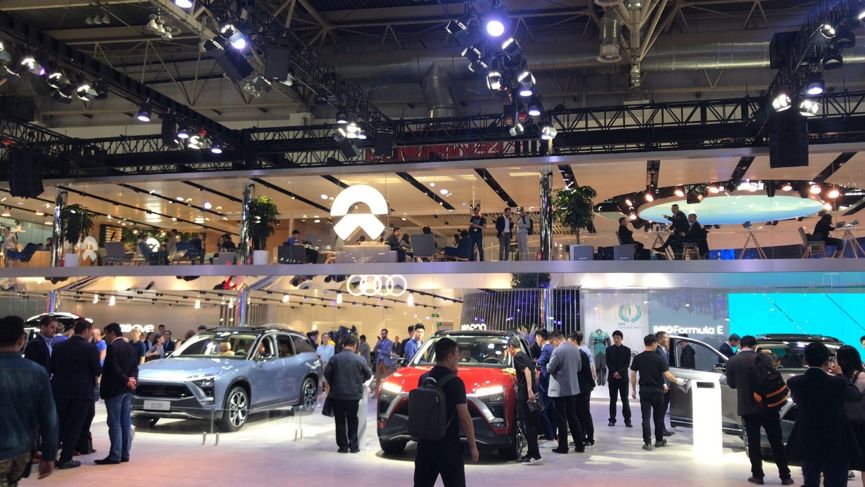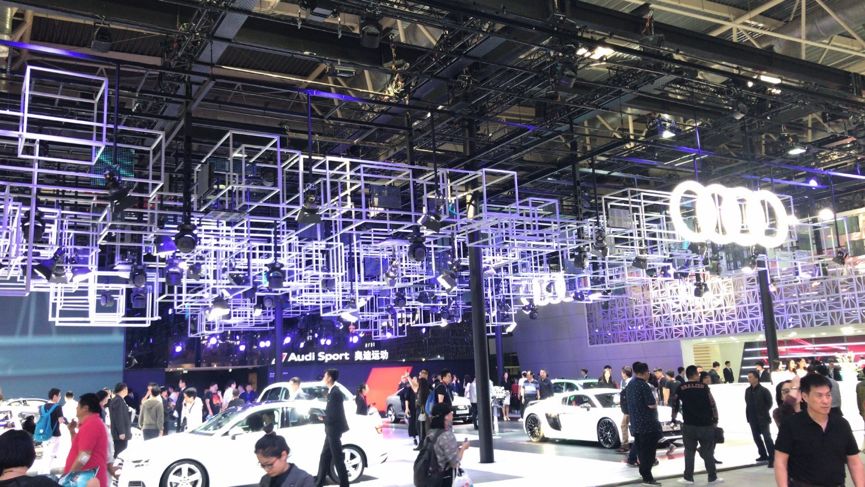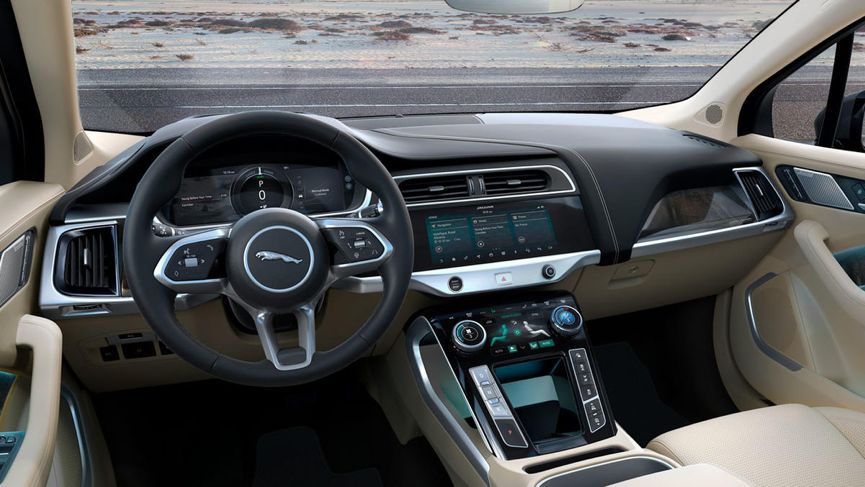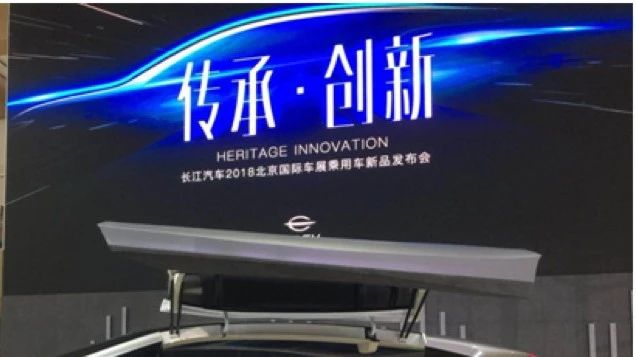The bustling Beijing Auto Show has finally come to an end.
As one of the highest-level international auto shows in China, the Beijing Auto Show is probably the best occasion for new car makers to showcase their cars domestically besides going overseas.
Last time I attended the Beijing Auto Show was two years ago, and as I walked out of the exhibition hall on a sunny afternoon, I overheard two girls next to me discussing, “What brand is the car with the dragonfly logo?” After all, that morning, I had just seen that car parked at the DS booth, quietly rotating on a lonely booth next to the wall with the “Future Auto” branding. Although Future Auto had participated in major exhibitions before 2016, the awareness of new energy car makers was generally low, and LeTV was the only well-known new energy vehicle manufacturer that year.
DS went down the path of KTV and club-style this year, and although Future Auto still had a booth next to them, the cool style gave it a touch of high-end feel. Although I cannot agree with the rim styling of their concept car, they have certainly become more generous and open two years later in terms of exhibition style.
New forces: What about substance after gaining face?
Overall, it is difficult to judge substance at this year’s Beijing Auto Show, but one thing is certain: new car makers have regained ample flow and popularity for “Made in China” in terms of face value.
In past Beijing Auto Shows, the most talked-about topics were not only celebrities and models, but also various luxury cars. The biggest news was usually “Some rich heir reserved X units of high-priced XXX on-site” or “Some celebrity helped push XX model on stage, with 3000 people crowded at the show.” However, new energy, new faces, and new lifestyles were the main topics of discussion this time.
Behind these topics are the new Chinese car-making companies that have taken on the main force.
There are 11 new faces at this year’s show: NIO, WM Motor, Byton, who are the well-known and popular celebrities, along with the low-profile Aiways, Future Auto, and Qidian, as well as the somewhat elusive Zhongdao, Yundu, Elektrobit, XPENG, and Changjiang EV.
NIO has the greatest face value, confronts Audi head-on in terms of booth design, and is not afraid of comparison in terms of area, style, and imposingness. However, the only drawback is that there was just one model showcased in seven different colors… It seems that having lots of money can really do whatever they want.

 # About NIO
# About NIO
After close contact with Nomi during the 42HOW event, the captain of Zheren (a consulting firm) expressed satisfaction with its performance. Nomi accurately recognizes the different positions of speakers in the car and reacts accordingly, such as opening the window closest to the speaker.
At the auto show, encountering old friends, they noted that new car startups are making an impressive showing this year. Companies like NIO, WM Motor, and Aiways have exhibition booths adjacent to luxury brands, which to some extent reflects their self-positioning and the attitude of the auto show organizer.
The 2018 Beijing Auto Show attracted more than 1200 exhibitors from 14 countries and regions, with 1022 vehicles on display, including 105 global premieres, 64 concept cars, and 174 new energy vehicles.
WM Motor employed a large wraparound screen at its booth, which reminded me of a similar display used by Byton. Recently, WM Motor shook the auto industry with a lowest-price offering of under 100,000 yuan, leading some to wonder if the electric vehicle era has come sooner than expected. In the past few days, WM Motor has conducted a series of senior executive interviews to generate discussion and answer questions.
Overall, WM Motor has done well in generating attention without obvious bugs.## Towards a better Automobile Exhibition
Talking about Byton first, they exhibited two cars which were plain and simple yet it was said that Byton has created quite an impact in the new energy vehicle market. The large screens in their cars are not as criticized as before, but the only concern is that mass production will be too late. The bad quality of their VR goggles used for watching the interior is what I am criticizing, which I feel is due to budget constraints faced at the exhibition.
Zhengdao Automobile shows up with the image of a ‘tuhao’ or nouveau-rich which means this time they displayed an exhibition booth that was equally atmospheric and luxurious. I first noticed Zhengdao because of its concept car H600 whose interior was as good as a luxurious clubhouse and has an overall cruising range of over 1000 kilometers. This year, Zhengdao showcased three concept cars which have the same flavor: a look that is not wrong but not too stunning either, an interior design dominated by screens and a horrifying range.
At the exhibition booth, Zhengdao’s main booth section has a design experience area which is scattered and not very popular. In the rest area, there were comfortable chairs and some pieces that looked like amber, whose materials are unclear. When asked about these by the booth staff, they could not explain what these were or why they were placed there.
There is a sense of contradiction between form and spirit.
Talking about Qidian Automobile, I wanted to experience their autopilot system but the staff informed me that due to poor network, I could not experience this. In the meantime, I looked at the surrounding products; they seemed better than Wey’s peripheral products.
Regarding Changjiang EV, except for the ugly car itself, everything else seemed fine.
The concept car C10 exhibited as part of the main exhibition booth integrated many cool factors in one car which makes it difficult to comprehend it as a car. It holds the most popular elements of this year’s auto show: gull-wing doors, no B-pillars, confrontational seats, LCD screens at the front and rear, and continuous tail lights… But perhaps because there are too many popular elements to control, the overall look is strongly fragmented, especially at the rear design, which is too messy.
In previous auto shows, when it came to new energy vehicles, people first inquired about cruising range, followed by charging, and then if there were any high-tech features. However, since 2018, new energy vehicles, especially pure electric concept cars, have basic cruising ranges of 350 ~ 400 kilometers thanks to the combined efforts of policy and technology. After two years of market education, most consumers now know that battery density and cruising range are difficult to become unique selling points or weaknesses of a single brand. Charging is no longer the concern of one or two companies but will reflect more progress at an industry-wide level.From policy to market, the focus is becoming increasingly clear towards intelligence and sharing, and the interactiveness of automotive products has become key.
In fact, I think that holding such an auto show is a great opportunity for interaction between enterprises and consumers. From products to booth experiences, they are all great touchpoints for a deep understanding of each other. Consumers, media, and peers all come to the show with magnifying glasses to examine cars and exhibitions.
As for the question I raised at the beginning, new automotive startups have successfully upheld the reputation of entrepreneurs on the surface, but upon closer inspection, bugs still exist. Whether it is product or experiential settings, the haste and immaturity of new enterprises are still an unavoidable fact.
Is this because the rules of the automotive industry have already changed, or is it because these enterprises have not yet matured?
The answer depends on whether consumers will ultimately pay the bill.
History has always been like this, winners are king and losers are commoners. How much impact can the current tide of reform have on the automotive industry?
Traditional Automakers: Everything Depends on Their DNA
The struggle between the old and the new, the battle of the styles, the outcome is still unclear. However, by looking at the traditional car giants, we may have some insights. Different traditional enterprises have different levels of acceptance and postures towards this new wave of change.
For enterprises that are focused on technology and youth, they can easily keep up with the rhythm, such as Nissan.
The various intelligent interactions experienced on the exhibition hall of new automotive startups are not adequate nor smooth enough, but it is a piece of cake for well-funded traditional automakers like Nissan. Last year, Nissan released brain control technology at the New York Auto Show, which has now turned into an EEG testing experience at the Beijing Auto Show. Even though this has some gimmicks, the Chinese people usually do not buy products which have reduced configurations. Moreover, the touch screens at Nissan’s booth are probably the smoothest experience in the whole show.
Nissan has brought the pure electric Sylphy to the show, which shares a platform with one of the world’s best-selling EV models, the LEAF, which is something to look forward to.
Another example is Jaguar, which is a passive embracer, moving forward cautiously. This time, Jaguar brought the I-PACE, which starts at a subsidized price of RMB 680,000.
Because I had previously paid close attention to the I-PACE, I asked a colleague on the spot why people would buy this car. It doesn’t seem that different from traditional Jaguar models. Is it just an electric version that Jaguar has introduced for its consumers?
It seems that Jaguar has not yet seized the opportunity of the new intelligent trend in a timely manner.
Especially with its internal design still being so complicated, with plenty of physical buttons expressing a reluctance to give up the past.

The emphasis is on the spatial experience, but the market opportunity has not been fully grasped.
Interestingly, more and more brands are turning their exhibition stands into living spaces, with intelligent cabins as the main selling point, emphasizing better spatial experiences.
I had originally planned to count how many brands had set up so-called living space exhibition areas at this auto show, whether they were selling peripheral products, coffee shops, or interactive experiences.
I was too tired and gave up.
However, I have come to a conclusion: automobile products are increasingly integrated into everyday life scenes, due to the gradual shift of value production in the automobile industry, in addition to the product’s own intelligent features.
This can be called systemic thinking, and its logic is: selling a car may not necessarily make money, but bundling a bunch of scenario-based consumer services together can still make money overall. One of my small unit sales of services may not make money, but selling multiple services in a package can still make money overall.
Profit can be calculated in this way, as well as cost. Elon Musk is good at doing this kind of math problem.
Nowadays, both new and old car companies like to create an experiential area, called “deep interaction” and “deep experience” with the customers. However, from what I have observed, all the exhibition stands’ display effects require continuous accumulation and optimization of brand-related interactive experiences with customers. I went to more than one booth and found that their experience areas were completely ignored, with an inconspicuous location, no dedicated publicity or guidance, and they were merely decorations.
I experienced Chery’s Lion intelligent cockpit on site. After queuing for a long time, the only thing I experienced was a simple voice call function and fatigue testing (when the driver closes their eyes, the system assumes that the driver is tired and reminds them to pay attention to safety, etc.)… This really didn’t give me much sense of the future, except for a holographic projection area in the center armrest of the system, which had a hint of peripheral science fiction.
Other VR experiences, I’m too lazy to even mention them. The rough visual and dizzy feeling and the interactive interaction that cannot really be considered are not really considered interactive.
In the future, the cockpit should at least have an efficient human-computer interaction system, flexible switching modes, and a refreshing visual effect. How can it represent the future?

- NIO | HI NOMI, are you the No.1 onboard AI?
- Tesla Model 3 Asia debut: The Future Built for $35k | Beijing Auto Show

This article is a translation by ChatGPT of a Chinese report from 42HOW. If you have any questions about it, please email bd@42how.com.
